Muscle protein synthesis is the process of building muscle mass.
Muscle protein synthesis is essential for exercise recovery and adaptation. As such, it’s a really popular topic in the fitness community.
But the methods used to measure muscle protein synthesis in studies are very complicated. Some basic knowledge of the various methods is essential to draw proper conclusions from the research you’ll read.
The purpose of this article is to provide a comprehensive guide on muscle protein synthesis: what is it, how is it measured, what are the strengths and limitations, how to draw proper conclusions from muscle protein synthesis research, and of course practical guidelines how to optimize it.
I’ve made a table of contents, so you can jump to specific sections of interest or reference a specific section.
Please note that section 3 described the various methods to measure muscle protein synthesis. You might want to skip this section if you just want exercise and nutrition guidelines to optimize gains. Perhaps you can come back to it later when you are ready to become a true muscle protein synthesis research master.
I’ll be covering:
Contents
- 1. What is protein synthesis?
- 2. Why muscle protein breakdown is of less importance
- 3. Methods to measure protein synthesis
- 4. Interpretation and misconceptions
- 5. Advantages of muscle protein synthesis measurements over muscle mass measurements.
- 6. How to optimize muscle protein synthesis: exercise guidelines.
- 7. How to optimize muscle protein synthesis: nutrition guidelines
- 8. Summary
1. What is protein synthesis?
Protein is the main building block of your muscle.
When you ingest protein, the protein is digested into amino acids. These amino acids are absorbed in the gut and subsequently released into the circulation. From there, the amino acids are transported to peripheral tissues where they are taken up and can be build into tissue protein.
Protein synthesis is the process of building new proteins. This process happens in all organs. Muscle protein synthesis is the process of building specifically muscle protein.
Think of a muscle as a wall. Each brick is an amino acid. Muscle protein synthesis is the addition of new bricks to the wall.
Now, this would mean the wall would become larger and larger. However, there is an opposing process. On the other side of the wall, a process called muscle protein breakdown is removing bricks. Muscle protein breakdown is also commonly referred to as muscle proteolysis or muscle degradation.
It’s important to realize that both muscle protein synthesis and breakdown are always ongoing. They are not “on” or “off”, but their speed can increase or decrease. The difference in speed of these two opposing processes determines the net change in muscle protein size.
If muscle protein in synthesis exceeds muscle protein breakdown, the wall will become larger (your muscles are growing). If muscle protein breakdown exceeds muscle protein synthesis, the wall is shrinking (you’re losing muscle mass).
The sum of these two processes determines your net balance:
net muscle protein balance = muscle protein synthesis – muscle protein breakdown.
You can also compare it to your bank account.
balance = income – expenses
2. Why muscle protein breakdown is of less importance
We’ll almost exclusively talk about muscle protein synthesis, and not focus much on muscle protein breakdown.
That might sound like you’re missing out on a whole lot, but you’re not.
Changes in muscle protein synthesis are much greater in response to exercise and feeding than changes in muscle protein breakdown in healthy humans (Phillips, 1997)(Greenhaff, 2008).
While feeding can reduce muscle protein breakdown by approximately 50%, very little is needed to reach this maximal inhibition.
This is best illustrated by a study which clamped (maintained) insulin at different concentrations and also clamped amino acids at a high concentration.
There were five conditions:
- Fasted state
- high amino acids + low insulin
- high amino acids + medium insulin
- high amino acids + high high insulin
- high amino acids + very high insulin
In the illustration below, you see the effects on muscle protein breakdown.
In a fasted state, muscle protein breakdown rates were relatively high (condition 1). Amino acid infusion did not reduce muscle protein breakdown when insulin was kept low (condition 2). But when insulin was infused to reach a moderate concentration, muscle protein breakdown rates went down (condition 3). Further increasing insulin did not have an additional effect on muscle protein breakdown (conditions 4 and 5).
So this study shows us a couple of things.
Firstly, insulin inhibits muscle protein breakdown, but you only need a moderate insulin concentration to reach the maximal effect. In this study the medium insulin concentration already resulted in the maximal 50% muscle protein breakdown, but other research has shown that even half the insulin concentration of the medium group is already enough for the maximal effect (Wilkes, 2009).
Secondly, protein ingestion does not directly inhibit muscle protein breakdown. While protein intake can decrease muscle protein breakdown (Groen, 2015), this is because it increases the insulin concentration.
You only need a minimal amount of food to reach insulin concentrations that maximally inhibit muscle protein breakdown. In agreement, adding carbohydrates to 30 g of protein does not further decrease muscle protein breakdown rates (Staples, 2011).
Therefore, it often doesn’t make much sense to measure muscle protein breakdown in nutrition studies. All study groups that got at least some amount of food will have the 50% inhibition of fasted muscle protein breakdown rates. If the effect on muscle protein breakdown is the same between groups, then changes in muscle protein net balance would be entirely be explained by differences in muscle protein synthesis.
It should be noted that HMB decreases muscle protein breakdown in an insulin independent way (Wilkinson, 2013). It is not known of the effects of HMB and insulin on muscle protein breakdown are synergistic. However, HMB supplementation appears to have minimal effects of muscle mass gains in long-term studies (Rowlands, 2009).
Of course, you can speculate that muscle protein breakdown becomes more relevant during catabolic conditions during which there is significant muscle loss, such as dieting or muscle disuse (e.g. bed rest or immobilization). However, it cannot be simply assumed that the observed muscle loss in such condition is the result of increased muscle protein breakdown. After just 3 days of dieting, there is already a large decrease in muscle protein synthesis. In agreement, there is a large decrease in muscle protein synthesis during muscle disuse. Therefore, muscle loss may be largely (or even entirely) caused by a reduction in muscle protein synthesis, and not by an increase in muscle protein breakdown.
But let’s say that muscle protein breakdown does go up a bit during catabolic conditions. Then the first question would be, could nutrition prevent this? If the answer is no, muscle protein breakdown is still not that relevant to measure. If nutrition does have an effect, how much would it take? Let’s say you need double the amount of insulin you normally need to maximally inhibit muscle protein breakdown. That would still be a small amount of insulin that any small meal would release and all nutritional interventions have the same effect. So even during catabolic conditions, muscle protein synthesis rates are likely much more relevant than muscle protein breakdown.
While it sounds that muscle protein breakdown is a bad thing and we should try to completely prevent it, that is not necessarily true. Muscle proteins get damaged from exercise, physical activity, and metabolism (e.g. oxidative stress, inflammation etc). Muscle protein breakdown allows you to break down those damaged muscle proteins into amino acids and recycle most of them into new functional muscle proteins again.
In fact, muscle protein breakdown has beneficial roles in muscle growth and adaptation! If mice are genetically engineered so that they can’t properly break down muscle protein, they are actually weaker and smaller than normal mouses. This highlights that at least some amount of muscle protein breakdown is necessary to optimally adapt to training and maximize muscle growth (Bell, 2016).
So anytime you eat just about anything, you’ll reduce muscle protein breakdown by 50%. We don’t know how to reduce muscle protein breakdown even further, but it’s not clear if we would even want that, as at least some muscle protein breakdown seems necessary for optimal muscle growth.
3. Methods to measure protein synthesis
3.1 Nitrogen balance
Carbohydrates and fats are made of carbon, hydrogen, and oxygen. In contrast, protein also contains nitrogen. So the nitrogen that we get through our diet has to come from protein.
As protein is broken down by the body, most of the protein derived nitrogen has to be excreted in the urine or it would accumulate and become toxic.
It’s fairly easy to measure nitrogen in food, feces, and urine. By doing so, we can calculate a balance:
nitrogen balance = nitrogen intake – nitrogen excretion
If nitrogen intake is bigger than nitrogen excretion, we are in a positive nitrogen balance. This indicates that your body stores more protein than it’s losing. This gives a general view that the body is in an anabolic (growing) state.
However, this method gives us very little insight into what exactly is going on.
You can have a positive nitrogen balance, while you’re losing muscle tissue. For example, your body might be building gut protein at a rate that exceeds your muscle loss.
As such, nitrogen balance is not that informative for athletes.
Example paper nitrogen balance: (Freeman, 1975)
3.2 Tracers
Before we go on to the next method, I need to introduce a new concept: tracers.
Tracers are compounds that you can trace throughout the body. Amino acid tracers are the most common type of tracers to assess muscle protein synthesis. These are amino acids that have an additional neutron. These amino acid tracers function identically to normal amino acids. However, they weigh slightly more than a normal amino acid, which allows us to distinguish them from normal amino acids.
A normal carbon atom has a molecular weight of 12. When we add a neutron, it has a weight of 13. We indicate these special carbons like this: L-[1-13C]-leucine. This means the amino acid leucine, has a carbon atom with a weight of 13. When you see such a notation in a paper, you know they’re using tracers.
Because you can follow amino acid tracers throughout the body, it allows us to measure various metabolic processes that happen to the amino acids, including protein synthesis.
3.3 Whole-body protein metabolism
Using amino acid tracers, we can measure protein synthesis, breakdown, oxidation and net balance.
Note that protein synthesis refers to protein synthesis of any protein in the body (whole-body protein synthesis). Again, do not mistake it for muscle protein synthesis, which is protein synthesis specifically of muscle protein. Therefore, (whole-body) protein synthesis measurements are not necessarily relevant for athletes and might actually give you the wrong impression (as will be discussed in chapter 3).
However, whole-body protein metabolism data provides more insight than the nitrogen balance method.
Nitrogen balance only indicates an overall anabolic or catabolic state. The whole-body protein metabolism method also indicated this by a positive or negative protein net balance. However, it also shows whether changes in net balance are because of an increase in protein synthesis, a decrease in protein breakdown, or a combination of both.
Please note that this does not contradict the earlier discussion on muscle protein breakdown is not that important. While muscle protein breakdown doesn’t change much, protein breakdown of other tissues can change drastically.
Instinctually, you might think that a more positive whole-body protein balance must be a good thing. However, that’s not really the case. It could simply mean that you’re building more gut protein, which is not something you would necessary want unless you want to have a bloated stomach.
Example paper whole-body protein metabolism: (Borie, 1997)
3.4 Two pool and three pool arteriovenous technique
These methods measure amino acid concentrations in the artery to a muscle, and the vein from that muscle.
Let’s say that the amino acid concentration is low in the artery going to a muscle and high in the vein coming from that muscle. Where did those extra amino acids in the vein come from? They’re released from the muscle, and it would indicate that the muscle is breaking down. Conversely, if the muscle would take up a lot of amino acids from the artery, but releases less amino acids to the vein, it would indicate that the muscle is taking up a lot of amino acids to build muscle proteins.
This method is called the two pool arteriovenous method. A drawback of this method is that you don’t really know for sure what is going on in the muscle. Just because a muscle is taking up amino acids, that does not mean it’s building all of those amino acids into actual muscle tissue.
To solve this problem, this method can be combined with muscle biopsies. This is called the three pool model and allows us to see what happens to the amino acids once they’re taken up by the muscle.
The main advantage of this method is that it measures both muscle protein synthesis and muscle protein breakdown. However, the calculations are depended on blood flow measurements, which we can’t measure all that accurately. Therefore, this is not the preferred method for measuring muscle protein synthesis.
Example paper 3 pool model: (Rasmussen, 2000)
3.5 Fractional synthetic rate
This method combines the infusion of amino acid tracers with muscle biopsies.
The most basic explanation is that you take a pre and post muscle biopsy, and measure the rate at which the amino acid tracer is built into the muscle.
This method gives you a fractional synthetic rate (FSR), expressed as %/h. It shows you how fast a muscle would rebuild itself entirely. An FSR of 0.04 %/h means that each hour, 0.04% of the total muscle is synthesized. This translates to a completely new muscle every 3 months. To regenerate as fast as Wolverine of the X-men, you would need an FSR of 100000 %/h in all your tissues.
This is the most common method of measuring muscle protein synthesis.
A minor drawback of this method is that it requires a ”steady state” to have the most accurate measurements. I don’t want to go into too many details, but it often means plasma amino acid enrichment should stay at the same level (the ratio of the tracer amino acid to the normal amino acid). However, protein ingestion would disturb this steady state, as a lot of normal amino acids will enter the blood, thus throwing off the tracer amino acid to normal amino acid ratio. Therefore, a lot of older studies provided protein in small sips, which wouldn’t disturb the steady state.
A slight disturbed steady state isn’t the end of the world for the measurement, but it’s sometimes something to consider when evaluating the data.
However, our lab has gotten fancy in this area. We have been able to produce highly enriched intrinsically labeled protein. This means that the amino acid tracers have been build into our protein supplements. So as our intrinsically protein supplements are absorbed, both amino acid tracers and normal amino acids enter the blood. Therefore the steady state is not disrupted and FSR can be calculated more accurately.
Example paper FSR (with and without intrinsically labeled protein): (Holwerda, 2016)
3.6 De novo muscle protein synthesis
The highly enriched intrinsically labeled protein has another advantage.
You can trace the amino acids from the protein: first, as they are digested, then as they appear in the blood, subsequently they are taken up by the muscle, and ultimately some of them are built into actual muscle tissue. So we can measure how much of the protein you eat, actually ends up into muscle tissue.
This is called de novo muscle protein synthesis. It’s building new muscle protein from your food, in contrast to building muscle protein by recycling amino acids from protein breakdown.
Example paper de novo muscle protein synthesis: (Trommelen, 2017).
3.7 Specific muscle protein fractions
When measuring muscle protein synthesis, we can measure mixed muscle protein synthesis (all types of muscle protein together). But muscle protein can be further specified into fractions.
The main muscle protein fraction is myofibrillar protein. Myofibrillar proteins contract and represent the majority of the muscle mass. This fraction is highly relevant for building muscle mass and strength.
Mitochondrial proteins only represent a small part of the muscle. Mitochondria are the powerhouses of the muscle, they burn carbohydrate and fat for fuel. Therefore mitochondrial protein synthesis is more informative about energy production capacity in the muscle and more relevant for endurance athletes and metabolic health.
Sarcoplasmic protein contains various organelles such as the endoplasmic reticulum and ribosomes.
Intramuscular connective tissue protein represents collagen protein in the muscle. This collagen helps transfer the muscle force generated by myofibrillar protein. It may be relevant for strength, injury prevention, and mobility, but we don’t know that much about it yet.
Example paper myofibrillar vs mitochondrial protein synthesis: (Wilkinson, 2000), or intramuscular connective tissue protein synthesis (Trommelen, 2020)
- Mixed muscle protein synthesis measures the synthesis of all muscle proteins.
- Myofibrillar protein synthesis measures only contractile proteins and is the most relevant measurement for muscle mass gains.
- Mitochondrial protein synthesis is more relevant for endurance and metabolic health.
3.8 Deuterium oxide
More recently, deuterium oxide (D2O, also called heavy water) is getting popular to measure muscle protein synthesis.
I’m going to skip most of the technical details, but the big difference with amino acid tracers is that this technique can accurately measure muscle protein synthesis days or even weeks, whereas the amino acid tracer technique measures muscle protein synthesis accurately over hours. In the next section, we’ll explain why this matters.
Example paper deuterium oxide: (Brooks, 2015)
3.9 Molecular markers
There is evidence that a variety of signaling molecules are involved in the regulation of muscle protein synthesis. Most notably, the protein from the mTOR pathway. Research of these molecular markers is very important to better understand how physiological processes are regulated and ultimately can be influenced by exercise, nutrition or even drugs.
However, at this point, we don’t understand them well for them to be useful predictors of physiology. In other words, while mTOR activation is involved in the regulation of muscle protein synthesis, an increase in mTOR activation doesn’t necessarily mean that muscle protein synthesis will actually increase.
Therefore, you should be very skeptical to draw conclusions based on studies that only measure molecular markers of muscle protein synthesis and muscle protein breakdown.
Example paper molecular markers (in this paper they don’t reflect actual MPS measurements): (Greenhaff, 2008)
4. Interpretation and misconceptions
Methods are not necessarily good or bad. But the interpretation of the data based on these methods can be wrong.
4.1 Whole-body protein synthesis vs muscle protein synthesis
We recently showed that resistance exercise does not increase whole-body protein synthesis (Holwerda, 2016). So should we conclude that resistance exercise is not effective to build muscle?
Absolutely not.
Whole-body protein metabolism measures the synthesis of all proteins in the body. Resistance exercise specifically builds muscle protein; it doesn’t increase protein synthesis in other organs. Other tissues in the body have much higher synthesis rates, and therefore, the muscle only has a relatively small contribution to the total whole-body protein synthesis rates. Therefore, you don’t see an increase in whole-body protein synthesis following resistance exercise.
In the same study, we also measured muscle protein synthesis (using the FSR method both with and without intrinsically labeled protein) and de novo muscle protein synthesis. All 3 methods showed that resistance exercise was anabolic for the muscle.
So resistance exercise did exactly what it’s supposed to do: build muscle, not build your other organs.
Often, labs don’t have the money or expertise to do many of these measurements. Imagine we would have only measured whole-body protein synthesis. Our study would give the wrong impression that resistance exercise is not anabolic, as we saw no increase in whole-body protein synthesis rates. Therefore it’s important that you understand the difference between whole-body protein synthesis and muscle protein synthesis methods.
Let’s discuss another example:
This study has been getting a lot of attention:
”The anabolic response to a meal containing different amounts of protein is not limited by the maximal stimulation of protein synthesis in healthy young adults” (Kim, 2016).
Shortly, it says that very large protein meals are beneficial because they reduce protein breakdown.
This gathered a lot of attention on social media and some of the comments were:
– See we shouldn’t ignore muscle protein breakdown!
– See that you need more than 40 gram of protein in each meal!
Again, this study gave the wrong impression, because whole-body protein breakdown was mistaken for muscle protein breakdown (the latter was not measured in this study). In case you’re wondering, this study did measure muscle protein synthesis. Both the 40 gram and the 70 gram dose were equally effective at stimulating muscle protein synthesis. So this study doesn’t indicate that you need more than 40 gram of protein each meal as an athlete.
4.2 Correlation muscle protein synthesis and muscle mass gains
One of the purposes of measuring muscle protein synthesis is to study if an intervention helps to build muscle or maintain muscle mass.
On social media, I occasionally see people dismissing muscle protein synthesis studies by claiming:
”it’s just an acute mechanistic study, it doesn’t necessarily translate to long-term changes in muscle mass”.
While there is some truth to the statement, it’s massively overused and often used as a cop-out as they have limited understanding of muscle protein synthesis. In fact, there are strong benefits for acute muscle protein synthesis studies over long-term training studies, which I’ll discuss in the next section.
Let me first get something out of the way: we have no bias for either acute or long-term studies. We run both at our lab, and do some of the most expensive studies in the field of either type.
The concern that muscle protein synthesis may not translate to muscle mass gains got an uprise when the following study was published:
”Acute post-exercise myofibrillar protein synthesis is not correlated with resistance training-induced muscle hypertrophy in young men” (Mitchell, 2014).
A lot of people seem to think that based on this study, muscle protein synthesis measurements do not translate to actual muscle mass gains in the long term.
But that conclusion is way beyond the context of the study. This study measured muscle protein synthesis in the 6 hours after a single exercise bout. However, resistance exercise can increase muscle protein synthesis for several days. So a 6-hour measurement does not capture the entire exercise response. This study showed that measuring muscle protein synthesis for 6 hours does not predict muscle mass gains. That is totally different from the conclusion that muscle protein synthesis (regardless of measurement time) does not predict muscle mass gains.
This was followed up by a study which used the deuterium oxide method to measure muscle protein synthesis rates during all the weeks of training (not just a few hours after one session), and found that muscle protein synthesis did correlate with muscle mass gains during the training program (Brooks, 2015).
More recently, a study found that muscle protein synthesis measured over 48 hours after an exercise bout did not correlate with muscle mass gains in untrained subjects at the beginning of an exercise training program, but it did at three weeks of training and onwards (Damas, 2016). While untrained subjects have a large increase in muscle protein synthesis after their initial exercise sessions, they also have a lot of muscle damage. So muscle protein synthesis is mainly used to repair damaged muscle protein, not to grow. After just 3 weeks of training, muscle damage is diminished, and the increase in muscle protein synthesis is actually used to hypertrophy muscles.
So do these studies show that muscle protein synthesis predicts muscle mass gains, but only in the right context.
- Exercise elevates muscle protein synthesis for 24 hour or longer: ideally you have a muscle protein measurement of 24 hours or longer and have ‘trained’ subjects so training induced muscle damage is attenuated (3 weeks of training is enough)
- Protein ingestion increased muscle protein synthesis for ±3-6 hours, so ideally you have measurement period of 6 hours (longer would actually be detrimental)
5. Advantages of muscle protein synthesis measurements over muscle mass measurements.
A huge benefit of muscle protein synthesis studies is that they are more sensitive than studies that measure actual muscle mass gains. This means that muscle protein synthesis studies can detect an anabolic effect easier than long term studies which simply miss it (long term studies might draw the wrong conclusion that something does not benefit muscle growth when it actually does).
For example, it has been shown time and time again that protein ingestion increases muscle protein synthesis. But the vast majority of long-term protein supplementation studies (80%) have found that protein supplementation does not increase muscle mass gains (Cermak, 2012).
This is because most long term studies are underpowered, aka don’t have enough statistical power to find small positive effects. Muscle mass gain is simply a very slow process. You need to do a huge study, with a huge amount of subjects, who consume additional protein for many months, before you will actually see a measurable effect of protein supplementation.
We performed a meta-analysis (combining the results of individual studies) on the effect of protein supplementation on muscle mass gains. We demonstrated that only 5 studies concluded that protein supplementation had a benefit, while 17 did not! However, most of the studies that showed no significant benefit, did show a small (non-significant) benefit. When you combine all those results, you increase the statistical power and you can conclude that protein supplementation actually does improve muscle mass. So in this case, most long-term studies gave the wrong impression, and muscle protein synthesis studies are actually preferred.
There are a lot of long-term studies that have a relative small number of subjects and a small study duration and conclude that an intervention did not work (for example, protein supplementation, or X versus Y set of exercise for example). However, the studies were doomed to begin with. They needed to be 3 times as big and 2 times as long to have a chance to find a positive effect. These studies unfortunately give people the impression that something doesn’t work, while it actually might/does.
Now if the effect of giving additional protein is already extremely hard to detect in long-term studies, how realistic is it to find smaller effects? For example, optimizing protein intake distribution throughout the day has been shown to optimize muscle protein synthesis rates (Mamerow, 2014)(Areta, 2013). However, this effect is smaller than adding another protein meal. So the effect of protein distribution is almost impossible to find in a long-term study. For such a research question, acute muscle protein synthesis studies are simply much better suited.
The second big benefit of muscle protein synthesis studies is that they give a lot more mechanistic insight. They help you understand WHY a certain protein is good or not that good at stimulating muscle protein synthesis (for example, its digestion properties, amino acid composition etc). These kinds of insights help to better understand what triggers muscle growth and come up with new research questions. These kind of insights are very hard to obtain in long-term studies, which typically only show the end result of the mechanisms.
The benefits of measuring muscle protein synthesis include the sensitivity, controlled environment, and they allow you to investigate questions that are almost impossible to answer in long-term studies. In addition, they’ll give you a lot of mechanistic insight, which opens the door for future research.
But ultimately, it’s not a matter of which type of study is better. Again, we do both and each has its purpose and build on each other. Usually, muscle protein synthesis studies are performed to see if something work (as they are very sensitive) and why it works. Once we think we have a good understanding, then we’ll try to see if the concept has the expected effect in a long-term study. Only when you have both, you have pretty convincing evidence that your intervention does what you claim it to do.
6. How to optimize muscle protein synthesis: exercise guidelines.
Now it’s time to translate the muscle protein synthesis to some practical recommendations.
6. 1 Number of sets
Multiple sets increase muscle protein synthesis more than a single set (Burd, 2010). A higher weekly training volume (number of sets to muscle) results in a greater muscle mass gains (Schoenfeld, 2016).
6.2 Reps per set
It is often recommended that a rep range of 8-12 reps per set is optimal for muscle growth. The American College of Sport Medicine position stand states (ACSM, 2009):
For novice (untrained individuals with no RT experience or who have not trained for several years) training, it is recommended that loads correspond to a repetition range of an 8-12 repetition maximum (RM). For intermediate (individuals with approximately 6 months of consistent RT experience) to advanced (individuals with years of RT experience) training, it is recommended that individuals use a wider loading range from 1 to 12 RM in a periodized fashion with eventual emphasis on heavy loading (1-6 RM) using 3- to 5-min rest periods between sets
However, these recommendations lack evidence. More recently, Stu Phillip’s lab has performed a series of studies demonstrating that repetition load plays a minimal, if not negligible, role in the hypertrophic response to resistance exercise, if sets at the different rep ranges are performed to failure (Burd, 2010)(Morton, 2016).
The main takeaway here is that there are no magic rep ranges that are superior for muscle growth.
6.3 Training to failure
It is unclear whether each set should be taken to failure. Muscular failure decreases performance on subsequent sets, thereby reducing training volume. In addition, it has been suggested that frequent, high volume training with each set to taken to failure results in ‘overtraining’, eventually forcing reduced training volume or intensity for recovery (Stone, 1996).
Perhaps performing a set with 1-2 reps left in the tank will still give a near-maximal stimulus to the muscle, without much of the associated fatigue. If sets are not taken close to failure, the muscle protein synthetic response will be small (Burd, 2010). But at least in untrained subjects, training close to failure appears to produce similar muscle mass gains as training to complete failure (Nóbrega, 2017).
6.4 Rest between sets
A longer rest period between sets increases the larger post-exercise muscle protein synthetic response compared to a short rest period (5 vs 1 min)(McKendry, 2016). In agreement, a longer interset rest period improves muscle mass gains compared to a shorter rest period (3 vs 1 min) (Schoenfeld, 2016).
6.5 Training frequency
A single bout of resistance exercise can stimulate muscle protein synthesis for longer than 72 hour, but peaks at 24 h (Miller, 2005). This suggests that the popular so called ‘bro-split’ (hitting each muscle group once a week on different training days) is suboptimal. Indeed, training each muscle group at least twice a week results in larger muscle mass gains (Schoenfeld, 2016).
6.6 Training status
The total muscle protein synthetic (MPS) response (determined by the increase in MPS rates and the duration of these increased rates) is decreased in trained subjects compared to untrained subjects (Damas, 2015). However, the pattern of this decreased response is differs between mixed muscle protein synthesis (the synthesis of all types of muscle proteins) and myofibrillar protein synthesis (the synthesis of contractile proteins: the relevant measurement for muscle mass).
The increase in mixed muscle protein synthesis is shorter lived in trained subjects. In contrast, myofibrillar protein synthesis rates do not increase as much in trained subjects, but the duration of the increase does not appear impacted.
The larger increase in the total muscle protein synthetic response seems like a logical explanation why untrained people can make faster much gains than experienced lifters. However, this is not necessarily true.
In untrained subjects, there is not only a large increase myofibrillar protein synthesis, but also in muscle damage following resistance exercise. A large portion of the myofibrillar protein synthesis is used to simply repair damaged muscle proteins, rather than growing muscle proteins. In more trained subjects, here is a smaller increase in myofibrillar protein synthesis, but there is also much less or even minimal muscle damage following resistance exercise (just 3-10 weeks of training is enough to see these effects). This means that in a trained state, the increase in myofibrillar protein synthesis can actually be used to actually increase muscle mass. When you correct for muscle damage, myofibrillar protein synthesis rates measured over 48 hour post-exercise recovery are similair in untrained subjects and after 10 weeks of training (Damas, 2016).
Of course, most athletes would hardly consider someone trained after just 10 weeks. Unfortunately, little is know about how years of serious training impacts the muscle protein synthetic response to resistance exercise. While it’s tempting to speculate on how and if advanced athletes should modify training variables compared to untrained subjects, there is no solid evidence to support such suggestions.
7. How to optimize muscle protein synthesis: nutrition guidelines
7.1 Amount of protein
Twenty gram of protein gives a near-maximal increase in MPS after lower body resistance . Going up further to 40 g, results in a approximately 10% higher MPS rates (Moore, 2009)(Witard, 2014).
When data of several studies was combined and the amount of protein was expressed per bodyweight, it was found that on average 0.24 g/kg bodymass (or 0.25 g/kg lean body mass) would optimize muscle protein synthesis. However, the authors suggest a safety margin of 2 standard deviations to account for inter-intervidual variability, resulting in a dose of protein that would optimally stimulate MPS at an intake of 0.40 g/kg/meal (Moore, 2015).
More recently, it has been shown that the amount of lean body mass does not impact the response to protein ingestion (Macnaughton, 2016). In other words: bigger dudes don’t need more protein to get the same response as smaller guys.
However, this study found that 40 g of protein resulted in approximately 20% higher higher MPS rates compared to 20 g. The authors speculated that this was related to the fact that this was following a session of whole-body resistance exercise compared to the lower-body exercise used in previous studies.
7.2 Protein source
Protein sources differ in their capacity to stimulate MPS. The main properties that determine the anabolic effect of protein are it’s digestion rate and it’s amino acid composition (particularly leucine).
This is best illustrated by study which compared the muscle protein synthetic response to casein, casein hydrolysate and whey protein.
Casein is a slowly digesting protein. When intact casein is hydrolyzed (chemically cut into smaller pieces), it resembles the digestion of a fast-digesting protein. Consequently, hydrolyzed casein results in higher MPS rates than intact casein.
However, the muscle protein synthetic response to hydrolyzed is lower than that of whey protein. While both proteins are fast digesting, whey protein has a higher essential amino acid content (including leucine) (Pennings, 2011).
Animal based protein sources are typically have a high essential amino acid content and appears more potent than plant protein to stimulate MPS (Van Vliet, 2015). However, there this can potentially compensated by ingesting a greater amount of plant protein (Gorissen, 2016).
7.3 Leucine
Leucine is the amino acid that is thought to be most potent at stimulating MPS. Peak plasma leucine concentrations following protein ingestion typically correlate with muscle protein synthesis rates (Pennings, 2011). This supports the notion that protein digestion rate and protein leucine content are important predictors for anabolic effect of a protein source.
While leucine is very important, other amino acids also play a role,
This is best illustrated by study (Churchward-Venne, 2014) which compared the muscle protein synthetic response to five different supplemental protocol:
- 6.25 g whey
- 6.25 g whey with 2.25 g leucine for a total of 3 g leucine
- 6.25 g whey with 4.25 g leucine added for a total of 5 g leucine
- 6.25 g whey with 6 g BCAA added (4.25 g leucine, 1.38 g isoluecine for, and 1.35 g valine)
- 25 g whey (contains a total of 3 g leucine)
All five conditions increased muscle protein synthesis rates compared to fasting conditions. As expected from our earlier discussion on the optimal amount of protein, 25 gram of protein increased MPS rates more than just 6.25 gram.
Interestingly, the addition of 2.25 gram leucine to 6.25 gram whey did not further improve MPS. Since this low whey + low leucine amount had the total amount of leucine as 25 g whey (which contains 3 g leucine), it indicates that leucine alone doesn’t determine the muscle protein synthesis response.
The addition of a larger amount of leucine (4.25 gram) to the 6.25 gram whey did further improve MPS, with MPS rates being similar to the 25 gram of whey. This indicates that the addition of a relatively small amount of leucine to a low dose of protein can be as effective as a much larger total amount of protein.
Finally, it’s really interesting that the addition of the 2 other branched-chain amino acids (BCAA) appeared to prevent the positive effect of leucine on MPS. Isoleucine and valine use the same transporter for uptake in the gut as leucine. Therefore, it is speculated that isoleucine and valine compete for uptake with leucine, resulting in a less rapid leucine peak which is thought to be an important determinant of MPS rates.
7.4 Carbohydrate or fat co-ingestion
Carbohydrates slows down protein digestion, but have no effect on MPS (Gorissen, 2014). In agreement, adding large amounts of carbohydrates to protein does not improve post-exercise MPS rates (Koopman, 2007).
In addition to the effects on protein digestion, it has been suggested that carbohydrates stimulate insulin release, which may stimulate muscle protein synthesis and/or muscle protein breakdown rates. However, the addition of carbohydrates to post-exercise protein has no effect on muscle protein synthesis or breakdown rates. The effects of insulin on muscle protein breakdown rates are described in more detail in section 2, and the effects of insulin on muscle protein synthesis are further described in section 7.6.
Adding oil to protein does not slow down protein digestion or MPS (Gorissen, 2015). It possible that oil simply floats on top of a protein shake in the stomach, and that a solid fat would delay digestion. One study has reported a greater increase in net muscle balance following full-fat milk compared to fat-free milk (although this study used the 2 pool arterio-venous model which is not the most reliable measurement).
7.5 Whole food and mixed meals
Most research has looked at isolated protein supplements in liquid form such as whey and casein shakes.
Thirty gram protein provided in the form of 113 gram 90% lean grounded beef results in a similar MPS response as 90 gram protein (340 gram beef). This supports the protein dose-response relationship observed with protein supplements where 20 g of protein gives a near maximal increase in MPS.
Minced beef is more rapidly digested than beef steak, indicating that food texture impacts protein digestion. However, there was no difference in MPS between these protein sources.
Beef protein is more rapidly digested than milk protein. However, milk protein stimulated MPS more than beef in the 2 hours (Burd, 2015). Between 2 and 5 hours, there was no significant difference between the sources. This indicates that digestion speed does not always predict the muscle protein synthetic response of a protein source.
As discussed in the previous section, the addition of carbohydrate powder or oil to a liquid protein shake does not impact muscle protein synthesis. However, it is unknown how the components of (large) mixed meals interact. For example, the addition whole-foods carbohydrates such rice, potatoes, or bread to whole-food protein sources such as chicken.
It can be speculated that the protein in mixed meals is less rapidly digested, which is typically (but not certainly not always) associated with a lower increase in MPS.
7.6 Insulin
As described in my systematic review, insulin does not stimulate MPS (Trommelen, 2015).
This is best illustrated by a study which clamped (maintained) insulin at different concentrations and also clamped amino acids at a high concentration.
There were four conditions:
- high amino acids + low insulin
- high amino acids + medium insulin
- high amino acids + high high insulin
- high amino acids + very high insulin
In the illustration below, you see the effects on muscle protein synthesis.
Regardless whether insulin levels were kept low (similar to fasted levels) or very high, MPS rates were the same in all conditions.
In my systematic review, I describe the effect of insulin in other conditions including in the absence of amino acid infusion, but the conclusion remains that insulin does not stimulate MPS under normal conditions (Trommelen, 2015). However, it should be noted that insulin stimulates MPS at at supraphysiological (above natural levels) doses (Hillier, 1998). In the bodybuilding world, insulin is sometimes injected at supraphysiological doses to stimulate muscle growth.
Insulin inhibits muscle protein breakdown a bit, but only a little is needed for the maximal effect (this is discussed in dept in section 2). A protein shake alone increases enough insulin to maximally inhibit muscle protein breakdown, you don’t need additional carbohydrates (Staples, 2011).
7.7 Protein timing
Exercise improves the muscle protein synthetic response to protein ingestion. Therefore, it has been suggested that protein intake immediately post-exercise is more anabolic than protein ingestion at different time points.
Probably the best evidence to support the concept of protein timing is a study which showed that protein ingestion immediately after exercise was more effective than protein ingestion 3 h post-exercise (though this study used the 2 pool arterio-venous method which is not a great measurement of muscle protein synthesis) (Levenhagen, 2001). In contrast, a different study observed no difference in MPS was found when essential amino acid were ingested 1 h or 3 h post-exercise (Rasmussen, 200).
In addition, resistance exercise enhances the muscle protein synthetic response to protein ingestion for at least 24 hour (Burd, 2011). It is certainly possible that the synergy between exercise and protein ingestion is the largest immediately post-exercise and then slowly declines in the next 24 h hour. However, these data suggest that there is not a limited window of opportunity during which protein is massively beneficial immediately post-exercise, that suddenly closes within a couple of hours.
Overal, no clear benefit to protein timing has been found in studies measuring muscle protein synthesis studies. As such studies are much more sensitive to detect potential anabolic effects compared to long-term studies measuring changes in muscle mass, it unlikely that long-term studies will observe benefits of protein timing.
In agreement, a meta-analysis concluded that protein supplementation ≤ 1 hour before and/or after resistance exercise improved muscle mass gains (Schoenfeld, 2013). However, this effect was largely explained by the fact that the protein supplementation increased total protein intake, rather than the specific timing of protein intake.
From a practical perspective, a protein shake during or after a workout:
- is easy to do
- theoretically may have a very small benefit
- is a simple method to improve total protein intake
- prevents FOMO (fear of missing out on something)
So it could be argued: why not do it? It is mostly up to personal preference.
7.8 Protein distribution
We performed a study to assess protein intake in well-trained Dutch athletes. Even some Olympic athletes were included. We observed that athletes consumed ~1.5 g protein/kg/d based on multiple dietary recalls (Gillen, 2017). However, their real protein intake is likely ~25% higher based on a nitrogen excretion validation study we performed in a subgroup (Wardenaar, 2015).
The majority of the protein was consumed in the three main meals: breakfast, lunch and dinner. While this intake pattern has a reasonable distribution throughout the waking hours, amino acid availability is potentially low during the night.
This begs the question: does protein distribution throughout the day matter for muscle protein synthesis?
Several studies suggest that protein should be reasonably distributed for optimal anabolism. For example, an even balance of protein intake at breakfast, lunch and dinner stimulates MPS more effective than eating the majority of daily protein during the evening meal (Marerow, 2014). But a too high distribution resulting in many mini snacks may also be suboptimal. Providing 20 g of protein every 3 hours stimulates MPS more than providing the same amount of protein in less regular doses (40 g every 6 hours), or more regular doses (10 g every 1.5 hour) (Areta, 2013).
While there are more studies that support the concept of protein distribution, there are even more studies that suggest it has no clear benefit. If your goal is to absolutely maximize gains, it theoretically makes sense to try to aim for at least a reasonable protein distribution (3-4 protein rich meals divided throughout the day). But the impact of protein distribution is likely going to be small at best and you definitely don’t have to set a timer for each meal.
PS: I have some new data on this topic that I can’t share yet….but….it’s exciting 😉
7.9 Muscle full effect
The muscle full effect is the observation that amino acids stimulate MPS for a short period, after which there is a refractory period where the muscle does not respond to amino acids. More specifically, after protein intake, there is an lag period of approximately 45-90 min before MPS goes up and peaks between 90-120 minutes, after which MPS returns rapidly to baseline even if amino acid levels are still elevated (Bohe, 2001)(Atherthon, 2010).
The muscle full effect has given birth to a theory on how to optimize protein intake throughout the day in the online fitness community. It suggests that after amino acids levels have been elevated, you should let them drop down back to fasting levels to sensitize the muscle to amino acids again. Subsequently, protein intake will stimulate MPS again.
There is no evidence to support this theory.
The suggested mechanism seems unlikely as many food patterns result in elevated amino acid levels throughout the whole day. The traditional bodybuilding diet consists of very frequent, very high protein meals (e.g. chicken, rice, broccoli 6 times a day). In fact, it was specifically designed with the goal of keeping amino acids elevated throughout the whole day so there would always be enough building blocks for form new muscle tissue. Or intermittent fasting where all daily protein is eaten in a short time period (usually 8 hours).
These diets would only allow for a single ~90 min increase in MPS during a whole day. Clearly, that’s not what’s happening as these approaches are used by many with great success to improve muscle mass.
More likely, there’s a refractory period and it simply takes some time before the muscle responds to AA again. You don’t have to let amino acids drop to sensitize the muscle.
However, the relevance of the muscle full effect can be questioned in athletes.
This is best illustrated in a study where the effect of protein was assessed in both rested and post-exercise conditions (Churchward-Venne, 2012).
Protein intake alone stimulates MPS in the 1-3 h period after ingestion. Subsequently, MPS rates fall back to basal rates. However, in post-exercise condition, protein stimulated MPS rates in both the 1-3 h and the 3-5 h period.
It appears that the muscle full effect is not present in acute post-exercise conditions. It’s interesting to note that resistance exercise can increase the sensitivity of the muscle to protein for at least 24 h (Burd, 2011).
The muscle full effect is an interesting phenomenon, but we don’t understand it well enough to let it influence our protein intake recommendations.
7.10 Protein prior to sleep
As discussed above, an effective protein distribution optimizes MPS. Therefore, it makes sense to eat protein just prior to overnight sleep, the longest period you can’t eat. 40 g of protein prior to sleep increases MPS during overnight sleep (Res, 2012). Protein supplementation (27.5 g) prior to sleep during a 12-week resistance training program improves muscle mass and strength gains (Snijders, 2015).
7.11 Energy intake
Only three days of dieting already reduce basal MPS (Areta, 2014). This shows that an energy deficit is suboptimal for MPS, however you can grow muscle mass while losing fat (Longland, 2016). It is unclear if eating above maintenance is needed to optimize MPS.
8. Summary
- While muscle protein breakdown is an important process, it doesn’t fluctuate much, which makes it far less important for muscle gains than muscle protein synthesis
- Whole-body protein synthesis is not really relevant for athletes. (often just called protein synthesis in studies, don’t confuse it with muscle protein synthesis)
- Muscle protein synthesis is predictive for muscle hypertrophy.
- Muscle protein synthesis studies are more sensitive to pick up anabolic effects than long-term studies measuring changes in muscle mass
- It’s easy to draw wrong conclusions if you don’t fully understand the methods.
How to optimize muscle protein synthesis: exercise guidelines:
- Train each muscle group at least twice a week with multiple sets
- Rep range doesn’t matter if you train (close?) to failure
- Rest at least 2 minutes between sets
How to optimize muscle protein synthesis: nutrition guidelines:
- Eat 4-5 meals spread throughout the day: e.g. breakfast, lunch, post-workout shake, dinner, and pre-sleep.
- Eat 20-40 g protein at each meal. Amounts above 20 g give a small additional benefit.
- Choose animal protein (whey protein is the best). Or compensate by eating larger amount of plant protein.
- If your main goal is to build muscle, eat at least maintenance calories.
Now I need your help.
Please bookmark this post for a couple of reasons:
First, I will keep this post updated with new research.
Second, I will continue to further elaborate sections based on your feedback and add additional sections in the future.
Lastly, please reference specific sections from this article when you see a discussion on muscle protein synthesis. People mistaking whole-body protein synthesis for muscle protein synthesis: see section 4.1. Someone skeptical about a conclusion from a paper because muscle protein breakdown was not measured? Section 2 buddy. Someone claiming that protein supplementation is not effective based on a long-term study he read that found no improvement in muscle mass: section 5 got you covered.
Feel free to ask me questions about the methods, or interpretation on protein metabolism studies in comments or on Facebook. If certain questions keep popping up I’ll rewrite the related sections to make it more clear for everyone.

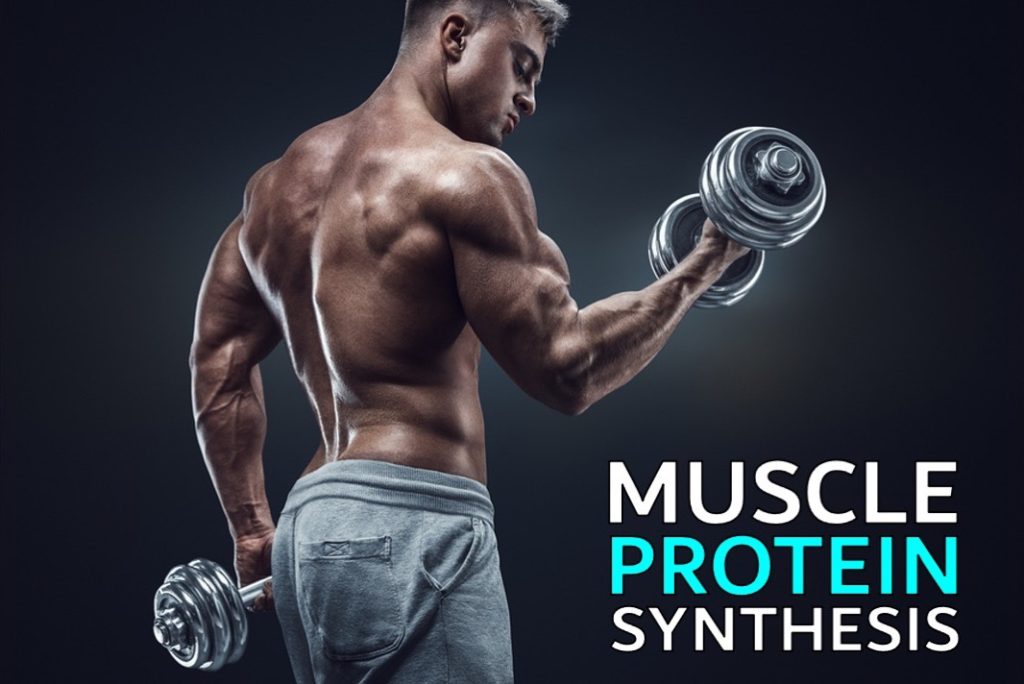
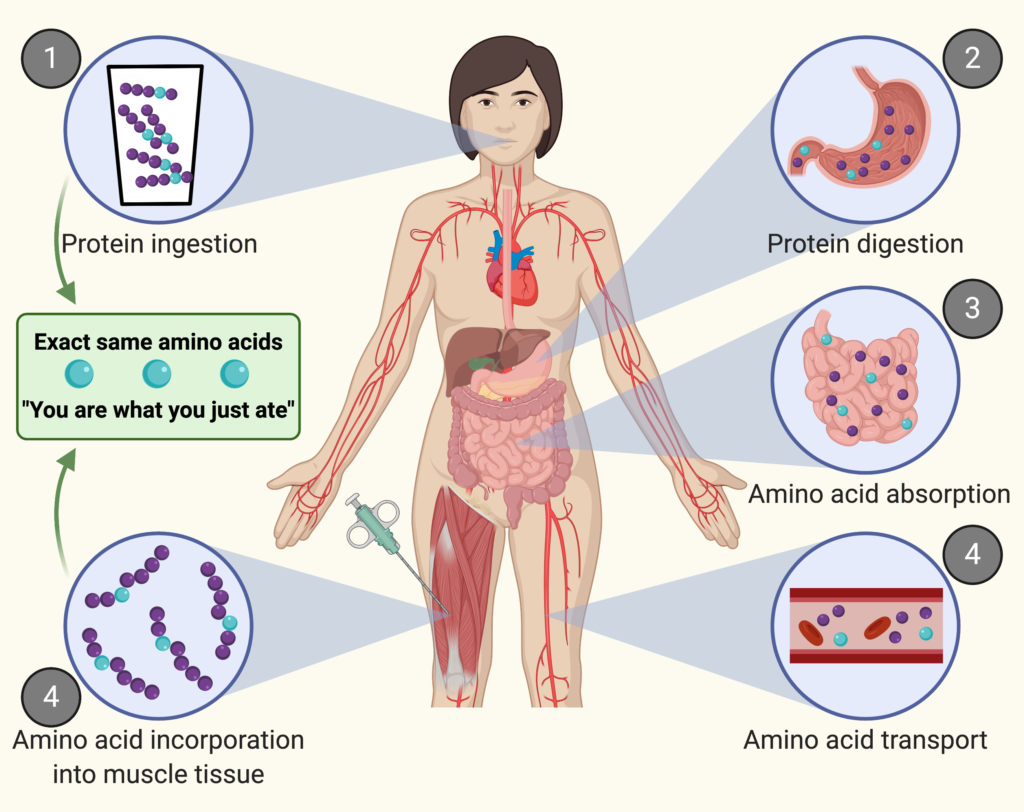

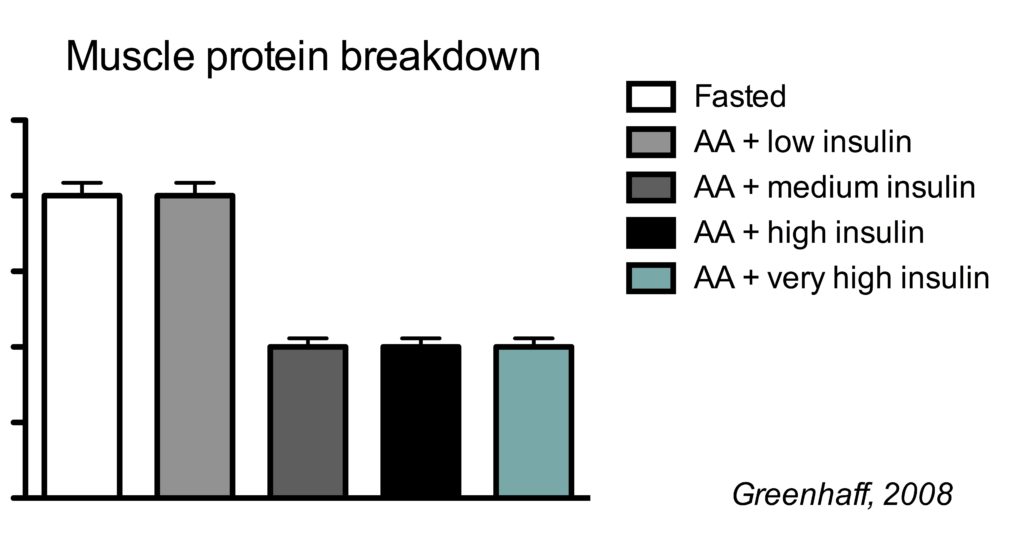
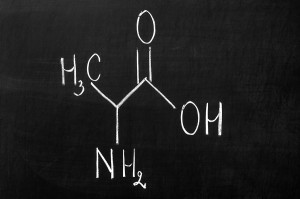
![1-[13C]-leucine](http://www.nutritiontactics.com/wp-content/uploads/2016/04/1-13C-leucine.jpg)
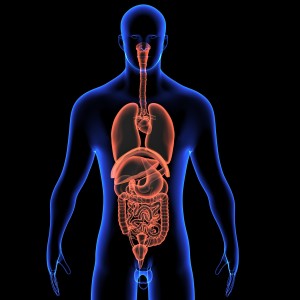
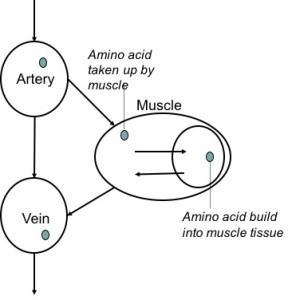
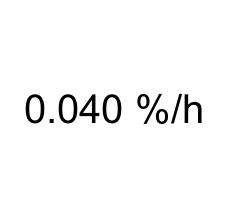
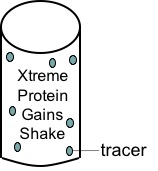
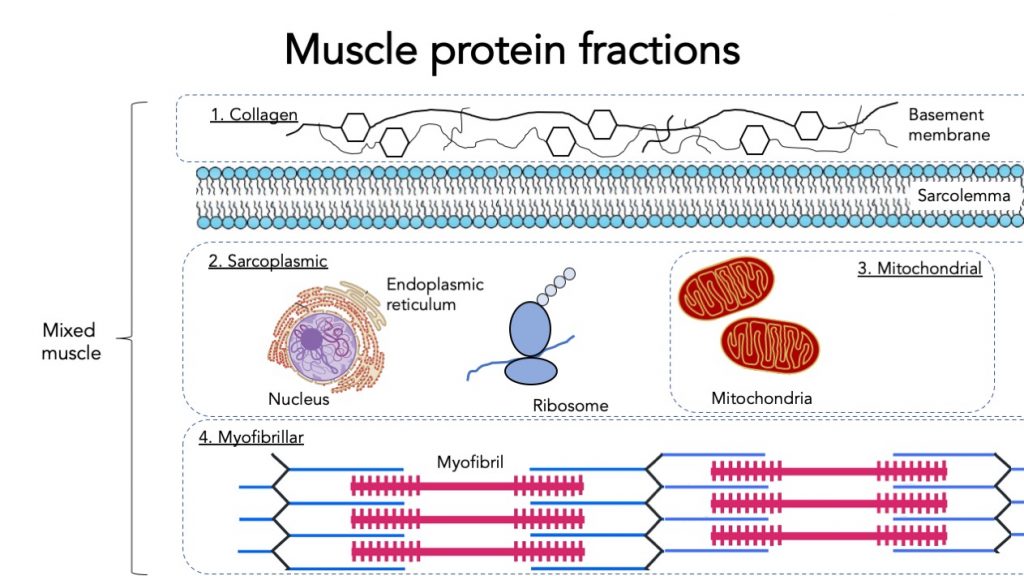
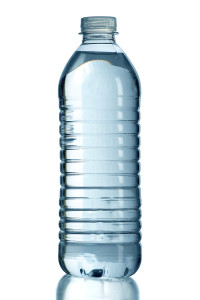
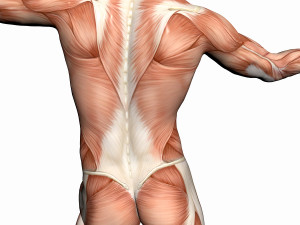


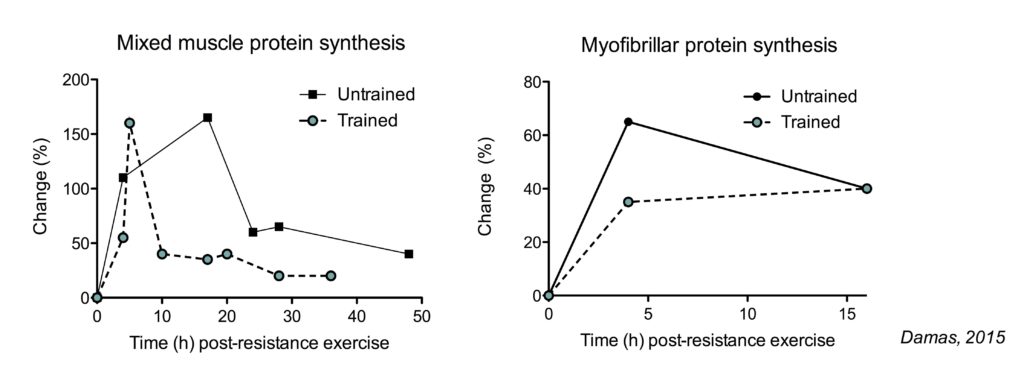
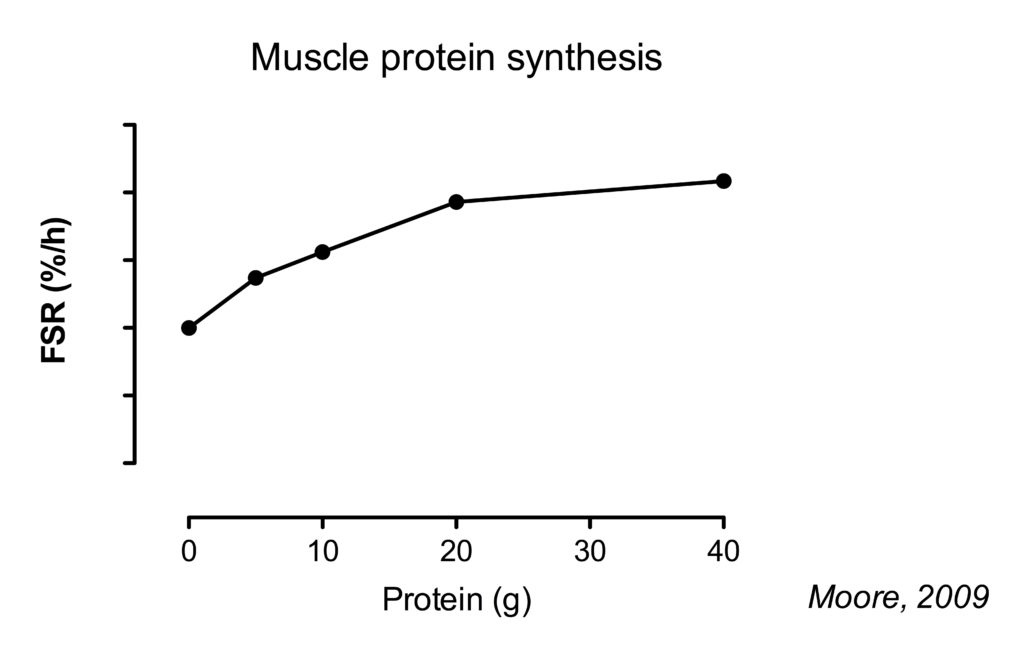
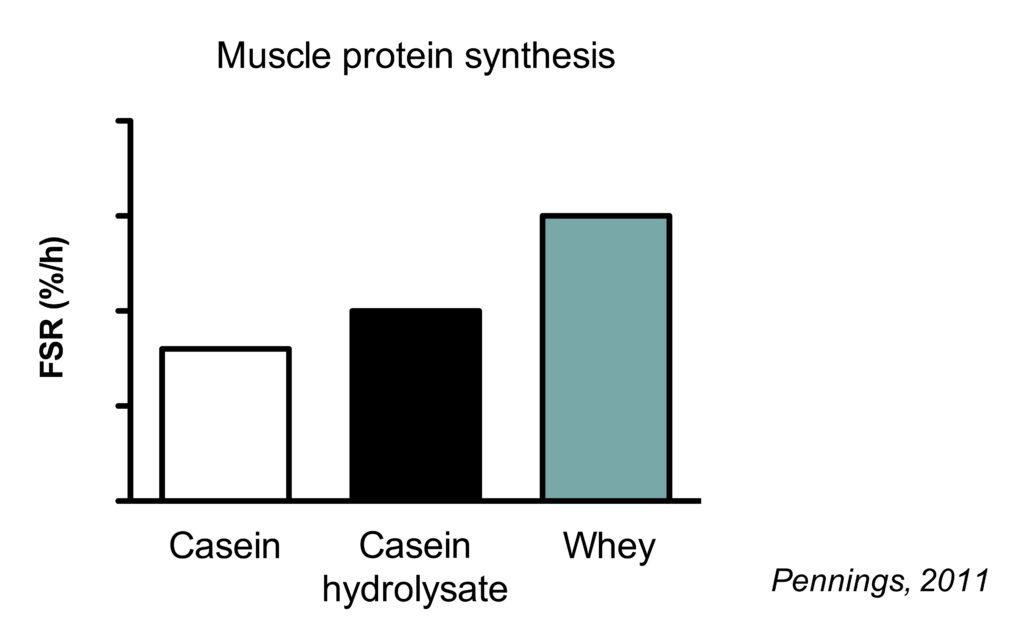
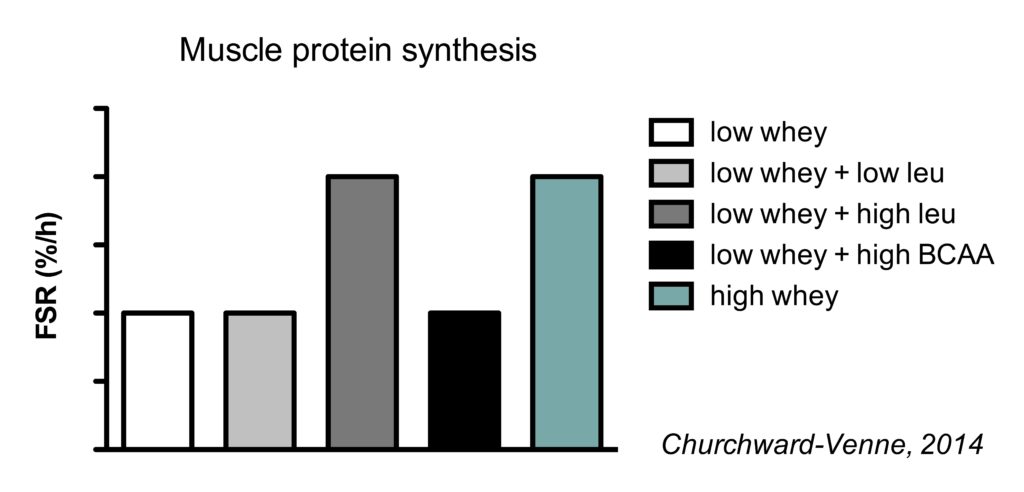
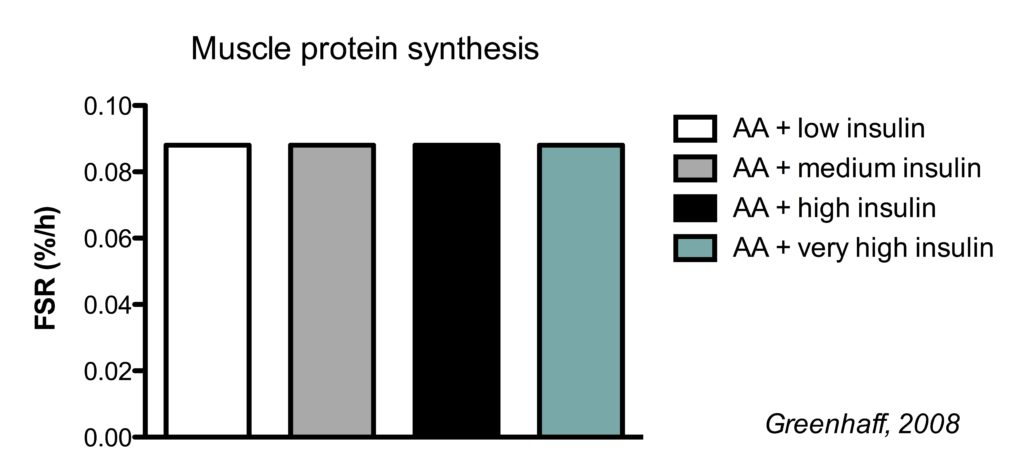
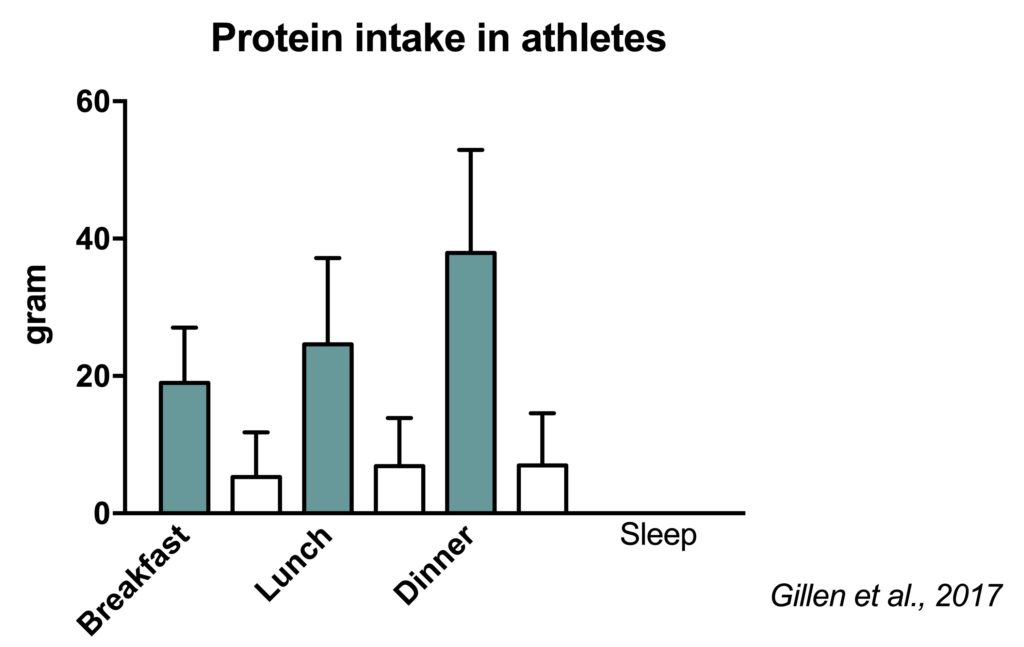
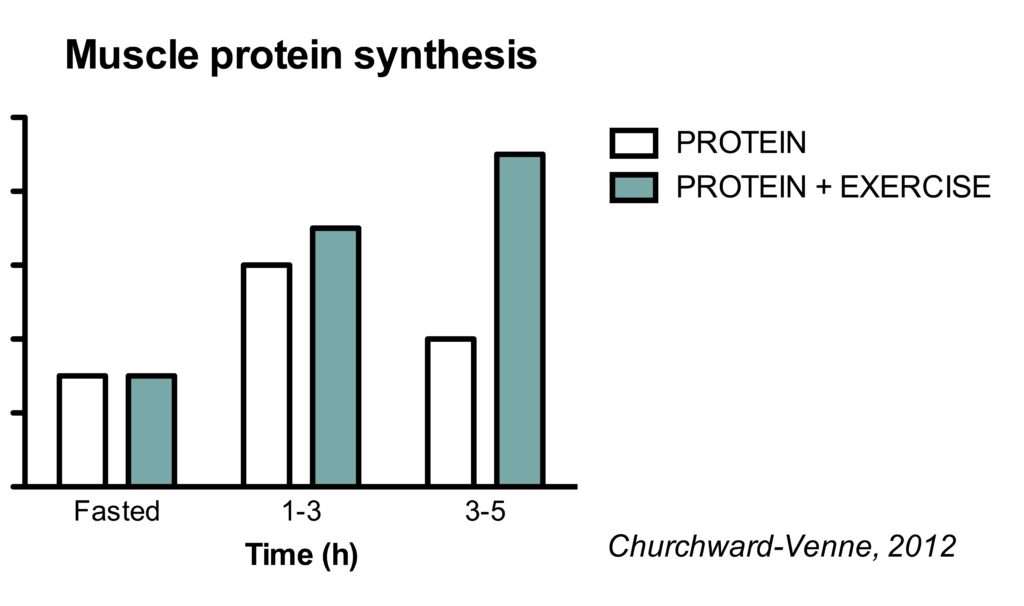
Sorry Jorn if this question has been asked already ….I walked through the thread but didn’t find an answer.
How would you compare max protein intake per meal b/w protein powder vs normal food.
I know beef for example takes quite a while to be processed i.e. we can consume 100 gr of protein and absorbed them but I’m wondering how it is w/ protein powder, provided we don’t consume anything else and powder is processed much faster. 30-40 gr of powder should be ok but how about +60gr for e.g.?
Thanks a lot again! Really appreciate it.
When a large amount of fast digesting protein is ingested, a relatively large proportion of it gets oxidized (burned as fuel). With a fast digesting protein source, a lot of the amino acids enter the circulation rapidly and will be oxidized. With a slow digesting protein, it will take longer before the protein is digested and absorbed. Therefore, the amino acids in the plasma will never be extremely high and trigger high levels of oxidation. Theoretically, this may lead to more of the protein being used for anabolism. I’ve speculated about this in an open-access paper:
Compare figure 1a to 1c
https://link.springer.com/article/10.1007/s40279-019-01053-5
So theoretically, a slow digesting protein may be more beneficial when protein is ingested in a very high dose and anabolism is measured over a long period. But it’s just speculation at this point.
Awesome , thanks a lot!
This graph is AWESOME, thanks!!!
I’ll consume 40g of slow proteins when not pre or post exercise, maybe before bed.
Hi, Jorn! In your opinion, can we stimulate MPS even if it’s elevated from a previous workout? I’m wondering if I train soon enough and try to produce an elevation in MPS while there is still one happening from the last workout, do you expect MPS elevation from the second bout to be worst compared to if I were trained in a fully recovered state … e.g. 8 sets in a single workout vs 4+4 in two consequent workouts.
Hey Boz,
I expect that MPS stimili are additive until a maximal value is reached. If MPS is already maximally stimulated, I don’t think a second training session would increase MPS (but it might result in a prolonged MPS response).
I don’t think how you distribute throughout the week will have a major impact on gains (maybe going from a frequency of 1 to twice a week per muscle group is beneficial, but after that I expect diminishing returns).
Thanks a lot, Jorn!
Does this mean that if we try to stimulate MPS while there is one happening from the previous bout of training (assume max MPS value reached), there would be still some benefits in terms of longer MPS time course?
How these two protocols compare in terms of muscle growth: 10,6 and 2 sets spread across 3 sessions in the week vs 3×6 sets. If we assume hypothetically that max MPS value is reached w/ 8 sets, do we accumulate unnecessary fatigue and muscle damage (10-sets session) that could have detrimental effect on the next 6-sets session?
Are we better of w/ 3×6 sets compared to 10,6,2 if the goal is muscle growth?
Thanks again and keep up the great work!
Yes, I would expect there is some benefit in terms of a longer MPS time course.
I don’t think that how you spread your exercise across a week will have a lot of impact. It’s possible there is a threshold value after which extra sets only cause unnecessary fatigue and muscle damage (or at least a poor return on the MPS vs damage). Based on that it might be wise to try to not do very large volumes on one day of the week and then leave that muscle untrained the rest of the week. You might be better of trying to distribute your volume a bit more throughout the week. But no clear benefits has been seem from distributing exercise volume over more than 2d/week.
Regarding this study: https://www.ncbi.nlm.nih.gov/pubmed/23459753, could the best strategy be eating 20g of protein as often as possible? Cause if the first PULSE group ate 20g instead of 10g every 1.5 hours, it would probably have much higher MPS out of all groups, do you agree?
We know from other studies that 20 g of protein probably optimizes MPS for at least 3-4 h, so I don’t think you would have to eat it every 1.5 h.
Hi Jorn,
For someone who is on a low calorie diet and is not doing resistance straining, would you recommend whey or casein as a protein rich snack / meal replacement?
Hi Jon,
Thanks for the amazing information! I am trying to follow a diet pattern where I eat surplus on my 4 training days and deficit on my 3 rest days, my goal is to average 250 caloric surplus per day (1750 surplus calories/week). I am following this pattern because I find myself having big appetite on training days so I am trying to compensate that with lower calorie intake on rest days to minimize fat gain. Do you think this pattern will affect my baseline MPS level given that I may have calorie deficits on rest days?
My second question is, I am having a problem getting adequate protein on rest days, I crave carb meals and consume most of my calories before hitting even 50-80g of protein (I weigh 70kg). I found some low-calorie protein-infused water product that has 7g protein from whey and 28 calories, if I consume that product along with say 3g of leucine on my rest days, maybe 2-3 times a day. Would that maintain higher MPS levels and compensate for my total poor protein intake on those days? Also, what if I do that with Greek Yogurt (12g protein/80 calories) in place of the whey-protein-infused water (to save money)?
Thanks!
Hey Aiman,
Thank you for the kind words.
1) No, a single day of caloric restriction doesn’t seem to negatively impact MPS rates.
2) Yes, those products would help. The whey protein infused water sounds like an overpriced benefit. What is the benefit over a normal protein shake (whey + water). 7 g is very little, a normal protein shake provides around 20 g. Leucine can help, but a normal whey protein shake in water would be the better option and likely cheaper. Greek yoghurt is a great product.
Hi Jorn,
You are so kind for taking the time to reply to your blog followers!
My reasoning was that a 7g of whey protein with additional 3g of leucine supplement might be an effective lower-calorie alternative to my regular 24g/120calorie shake since I tend to overindulge in high carb food on my resting days and find myself short in protein, the idea is to make it up by consuming leucine supplement on those days.
But now that you mention it, I agree that I could have as well taken 1/3 serving of my shake instead of buying those fancy products and saved a lot of money. Still, do you think that a 7g serving of whey protein combined with 3g leucine supplement three times a day can, at least somewhat, make up for my inadequate total protein intake on those resting days?
Thanks again!
Aiman
Yeah, it would definitely help.
You probably already realize this, but I still need to point it out: it would be best to solve the underlying issue: overindulging on high carb foods. You only need to eat a little bit less of them to make room for a protein shake her and there for example.
Thanks Jorn! You are absolutely right, I am working on solving that problem 🙂
Jorn, this question perhaps calls for speculation. Does the old adage ‘women make weak legs’ hold true for protein synthesis? Would a high amount of sexual activity involving the loss of semen tend to inhibit or prevent male protein synthesis? My hypothesis that it would is based on the reasoning that replacing semen taxes the bodies resources which diminishes the available resources which can be applied towards protein synthesis. Appreciate your thoughts. John
If your muscles look smaller like a week into a diet (fairly steep calorie deficit, much lower carbs), could that be because of lower muscle glycogen? Does water retention/loss play a role in that? Or is muscle glycogen depletion not something that would be physically noticeable?
Thanks!
Hey Tim,
I’m not entirely sure why you’re asking that on a post on muscle protein synthesis, but I’m happy to answer. Yes, a low carb diet will deplete glycogen levels. For each gram of glycogen you store, you also store about 3 g of water. So if you become glycogen deplete, you’ll also loss a bit of body water. And yes, that could be physically noticeable.
https://academic.oup.com/ajcn/article/103/3/738/4564609
Hi! I’m just a personal trainer looking to get a little more educated on nutrition. I had read this study in which they had one group at 1.2g/kg and one at 2.5g/kg of protein with both at a 40% deficit. The high protein group seemed to have much more weight loss and muscle gain. It was a short study, just a month. What do you think if this? Would it be recommended to increase protein this much and have such a large deficit occasionally to boost results? I’m not very well versed on nutrition so I’m sorry if this question comes across as ignorant. Thanks for your time!
Hi Maria,
I think the main conclusions from that study is:
1) You can gain muscle while losing fat
2) Having a higher protein intake seems to be a required for gaining muscle while losing fat.
I wouldn’t necessarily look at the numbers too much. We don’t know if you actually need to go that high, or maybe something in between like 1.8 g/kg might already give the optimal protein effect. And a 40% deficit is a lot, I don’t think that is necessarily the best strategy.
I would rather have people doing a slightly lower dieting phase. But definitely make sure that protein intake during dieting is AT LEAST 1/6 g/kg, ideally higher if it fits in the diet.
Hi Jorn,
I appreciate your efforts to educate people on the topic of muscle protein synthesis and bodybuilding in general, while keeping your output as evidence-based and pragmatic as possible. I really liked your article and I also watched your interview with Jeff Nippard on Youtube.
I have two questions regarding section 7.5 in this article where you wrote: “It can be speculated that the protein in mixed meals is less rapidly digested, which is typically (but not certainly not always) associated with a lower increase in MPS.”.
1. Does this lower increase in MPS after having a mixed meal actually last longer than when taking only whey protein, so that overall you get almost the same effect on hypertrophy, considering you get the same amount of protein in both cases? So, how important is digestion speed in the long term?
2. I work out early in the morning and I have a mixed meal post-workout which contains protein from eggs, milk, grains and whey protein concentrate powder. So, I take about 45 g of mixed protein (of which about 18 g whey protein) combined with some carbohydrates (which I know that is not necessary to stimulate MPS, but I do it to reach my daily macros). So, would you say that what I am doing is better than just having a serving of whey protein concentrate (with milk), considering the latter would lead to having less calories and protein for the day, while still being in a slight caloric surplus or maintenance? You could also make any suggestion of your own.
I have two more questions which don’t refer to your article.
3. As I mentioned, I work out early in the morning and I take pre-workout and about 12g of EAAs before I go to the gym. I take essential amino acids (free form as a supplement), so that they are absorbed faster from my body and so that I don’t stress my digestive system, which could impact my performance in the gym. Am I doing it right this way or should I take whey protein instead of EAAs, regarding performance and MPS?
4. Besides, do I need to add some carbs to my pre-workout shake, or is the pre-workout supplement enough to optimize my performance in the gym and adding carbs wouldn’t make any noticeable difference?
Hey Klajd,
Sorry to get back to you so late.
1) Yes, it’s certainly possible that slower digestion and absorption means a prolonged MPS response, with the total MPS similar. I speculate about that in this published review (see figure 1) (1). However, even if that’s the case, fast protein might still have an edge. If a fast protein results in higher MPS rates compared to a slow protein, the way to optimize MPS throughout the day is to have frequent fast protein meals.
2) No your post-workout nutrition seems solid.
3) EAA amino acids should give you the same response as whey or at least very close. So your approch is solid.
4) Some pre-workout carbs might help a bit with reducing MPB (although questionable how much and how important that would be). They might also give you a bit more of a pump if that is something you care about. You don’t really need the carbs for performance when doing resistance-training. So carbs or no carbs is not really a big deal, go with your preference.
1) https://link.springer.com/article/10.1007/s40279-019-01053-5
Hi Jorn,
What would be better for – lets say – push ups / chin ups:
2 times a week 3 sets to failure or 3 times a week 2 sets to failure?
Niek
Hi Niek,
There is some decent evidence that hitting a muscle group once a week is suboptimal. However, it’s not clear if frequencies above twice a week have a benefit (when volume is matched). So just pick the option you like best!
Best,
Jorn
Great post, however, assuming that the above is followed, when it comes to carbs and fats, how will you divide that up for maintenance?
Typically 20-35% energy percent fat. The remainder carbohydrates (I’m not a fan of low carbohydrate diets).
Hi Jorn,
What are your opinions on protein pulsing to maximize MPS? Say we have 4 meals a day, so 5g of leucine with each meal and 5g of leucine in between meals to get around the refractory period.
Also, would having some leucine before working out increase mtor activation than if you were to not have the leucine?
Lastly, what are your thoughts of having simple carbohydrates during working out?
Thanks!
Hi Kenneth,
I’m not really a fan of the proposed refractionary period. The research on it topic is confusing at best, and no refractionary period has been shown in a post-exercise state. See section 7.9 for more details. If there’s a refractionary period, leucine supplementation does not seem to overcome it:
https://www.ncbi.nlm.nih.gov/pubmed/28982725
Just make sure you have a protein meal/supplement before working out. You don’t need leucine supplementation.
Simple carbohydrates are not really needed during workout out for performance or anabolism/reduce catabolism if you had a decent meal before. But it’s not a bad thing to do, so you might as well if you like it and it fits your macros/caloric intake.
Regards,
Jorn
Jorn I turned 60 recently. Can you comment please on protein requirements for older athletes. I believe their protein needs are approximately doubled, if this is true can you comment on why please, Is it because they are less efficient at using protein because of age? Thanks in advance!
No clear protein requirements have been established for older adults or older adults engaging in exercise. Older adults have ‘anabolic resistance’ to protein: they need more protein to get an increase in MPS compared to younger adults.
I would try to ingest at least 1.6 g protein/kg/day (which seems close to ‘optimal’ in younger adults). Whether more is useful is not really now and also depends on the rest of your diet.
Speaking of non responders, whether academic true or not – what is the general varians in response to MPS from leucine from the studies you are reporting the averages from?
No studies have been designed to adress that question. My guess is there’s a lot variance.
Hi Jorn,
Very interesting article.
I’m fasting until dinner (6pm) every day. If i want to workout in the morning, what kind of protein shake would you recommend to stimulate MPS the rest of the day? Whey or casein? And how many grams? Should I take it pre or post workout?
Thanks!
Hi Eef,
A 20 g whey shake would probably be most practical for you. A 20 g whey shake maximized MPS (casein would give a slightly lower MPS response). Pre-or post workout doesn’t matter much. Since you’re fasting early in the day, I would probably take it post-workout.
Theoretically, there’s some advantages to going over 20 g and having casein when there’s a long period untill your next meal, but that’s 1) speculative at this point, 2) kinda takes away the fasting aspect.
Hi Jorn,
Thanks. Whey post workout it is!
Should i also take some carbs to reduce mpb, as you state in the beginning of the article?
Nope. 20 g whey protein is sufficient to reduce MPB.
HeyJorn, great work! I walked through all responses here and it’s clear that intentional prolonged/regular fasting would be detrimental if we are after physique goals. I’m just wondering, what would be, in your opinion, the negative impact of one 24-hr fast per week on muscle in case (1) weekly energy intake is = maintenance or slightly above (+5%-10%) and (2) weekly average intake shows 15%-20% deficit.
Thanks!
Hi Boz,
The impact of protein distribution (throughout the day or even week) is not that well established. Theoretically, you want a decent distribution (e.g. 3-4 evenly spaced meals) throughout each day. But there’s not enough strong evidence to back up that actually matters much. Therefore, a single 24 h fast on a weekly basis could theoretically have some negative effect, but if that’s the case I would expect it to be pretty minor.
How a positive or negative caloric balance impacts the effect of 1 day fasting is hard to speculate at this point. I think that caloric restriction has much of the same (health) effects as intermittent fasting. So the main reason to do a day of fasting while already in caloric restriction would only be because it suits your preference.
I’d love to see a section on the impact of doing cardio on MPS. Factors like cardio timing, intensity, duration, optimal time to separate from resistance training, etc. I’m wondering if it would be optimal to wait until after the 24 hour peak MPS before doing a hard cardio session to not divert energy from the highest part of the MPS window.
Hi Michael,
Unfortunately, no MPS research has been done on the interference effect (cardio training negatively impacting resistance-training induced MPS).
Here’s a good article on what is know about (but not focused on MPS):
https://www.strongerbyscience.com/concurrent-training/
What are your thoughts on pre-workout fast carbs and MPS? This Poliquin article said the insulin blunts the acute cortisol response from exercise which has been shown to reduce gains but doesn’t link the studies.
https://www.strengthsensei.com/best-pre-workout-meal/
“Cortisol can be your friend or your enemy depending on the circumstances. . And it so happens that higher cortisol DURING the workout correlates with greater strength gains. In fact, studies from Norway and Finland show that cortisol production is directly proportional with the amount of strength and muscle mass gains.”
Are you familiar with the studies he is referring to? And do you think it’s wise to avoid spiking insulin pre-workout based on them?
It seems that if these studies are legit then pre-workout whey should also be avoided because it causes a large insulin spike as well.
Would taking fish oil around exercise possibly blunt MPS due to its anti-inflammatory properties?
Possibly, although I would expect the anti-inflammatory effect of a regular dose of fish oil to be relatively small and I’m not sure how acute the effect would be. But to play it safe, I would try to take it it a few hours away from exercise.
Is there any way to get an idea of how long one’s MPS window is? I’ve heard ranges from 12 to 72 hours. It seems like knowing where you fall in that range would be useful in optimizing your feeding and training schedule. Is age the primary factor and is there a chart/graph of the average window length by age?
Nope, there is no indication. It’s not related to aging per se. How much volume you do and how trained you are is likely of greater importance.
Jorn, would a very high testosterone level (as seen in steroid use) prolong the MPS cycle, all other factors being optimal? I was recently stuck at 6 reps per set for my bench press when I had only one rest day between work-outs. I then switched to 2 days rest between work-outs and have increased my reps consistently by 1 rep per set per work-out for the same weight. Am I safe to conclude based on this that my MPS cycle is somewhere between 48 and 72 hours? I am using Testosterone Enanthate in relatively high but safe doses. Can you please explain why and how volume and one’s training level would affect the length of one’s MPS cycle please? Jorn can you comment on the ideal rep range for muscle hypertrophy please? Thanks in advance! John
When you say an MPS cycle, what do you exactly mean? Steroids simply increases MPS rates. MPS is simply higher on steroids compared to the same conditions when not on steroids:
fasted + steroids > natty fasted
not training + steroids > natty not training
training + steroids > natty training
So steroids don’t really impact any ‘cycle’, MPS are just higher than what they would be under natty conditions.
I wouldn’t try to predict how long your MPS response to exercise is based on gym performance. Your gym performance has to do with a lot more factors. It’s way too complicated to go into detail. Don’t worry too much on trying to optimize training frequency. All we know is that hitting a muscle group once a week is suboptimal, after that we don’t really know.
Your MPS response is likely related to training volume. If you would do 1 set, you would have a small increase in MPS and MPS would be back to baseline pretty quickly. The more volume you do, the higher the increase in MPS would be and how longer MPS would be elevated.
It appears that with increasing training status, the MPS response to training becomes shorter. So have explained this as that you need higher frequencies as you become more trained, but it could also suggest you simply need much more volume during each training session to get a big MPS response again.
You made clear that a big insulin spike is not necessary thus post workout carbs are not that important. Are you saying that post-workout carb usefulness has been completely ruled out for muscle growth or only specifically the carb insulin spike mechanism?
Is it possible that fast post-workout carbs that many trainees use could be contributing via another mechanism such as increased cell swelling/hydration? I’ve heard Brad Schoenfeld say cell volume/hydration is a factor in MPS (said t stretches the extraceullar matrix, triggers signalling to increase synthesis). After glycogen depletion muscles can super-load beyond baseline so theoretically you could create a sustained mechanical volumization of the muscle belly which seems like it should have some long term effect on muscle growth (like from mechanical stretching of the ECM or fascia). Could the rapid cell volumization from a fast post workout carb enhance muscle size growth through this mechanical mechanism, independent of the insulin pathway?
I recently came across Stan Efferding’s Vertical Diet which recommends dextrose+salt without protien immediately after workout for maximal rapid cell swelling (not for the insulin) followed by protein around 30 minutes later and it made me wonder if this hydration mix might be contributing in some way other than the old insulin spike hypothesis.
Post workout carbs have not shown any benefit for MPS/MPB if adequate protein is provided. If carbs would significantly increase swell swelling and that would significantly impact muscle growth, you would see the effect on the MPS response.
Carbs help increase muscle glycogen repletion, but that’s not really needed after resistance training under most conditions.
Of course, we cannot exclude the possibility that post workout carbs may have a positive impact on other outcomes that are not upstream of MPS (say theoretically they help to increase tendon recovery, such an effect is not related to MPS). But there’s just no evidence at this point for any useful positive outcome. However, if you can fit in the macros in your diet, you might as well do it for peace of mind if you like to.
Thanks. I’m still interested in rapid post-workout carbs for performance replenishment reasons (if I have an athletic training later in the day for example), even if it’s completely ruled out for hypertrophy benefit.
Since a lot of insulin is not necessary what do you think of these carb products like waxy maize, highly branched dextrin, vitargo, etc that supposedly absorb as fast or faster than dextrin and supposedly don’t have a much smaller insulin spike? I’ve never understood how that’s possible because a fast carb that doesn’t cause an insulin spike seems like a contradiction to me, unless it is fructose. I also assumed any carbohydrate is broken down into glucose in the gut so how can they be as fast as dextrin? Are they just expensive marketing gimmicks or is there some science behind them?
It seems like avoiding uneccessary insulin spikes is generally good and I also wonder if the (supposed) lower insulin spike from these fancier carbs would let the body continue burning more fat after the workout. Assuming their claims are actually valid, which I’m curious if you’ve looked into.
Not something I’ve really looked in. If it was researched and would have useful applications, I would have heard about it. So I’m sceptical on any application for ‘fancy carbs’.
I have a question you may be able to answer. I find that I feel substantially better when the majority of protein in my diet is gelatinous protein, gelatin or collagen hydrolysate. This significantly improves my mood and wakefulness. I will often consume 125-150g of this protein a day. The more I lower other protein sources, the better the effect is, generally, though it does seem to have a ceiling(going over 150g gelatin and below 80g other protein or so seems to not confer additional mood/wakefulness benefits). My question is, how do you think I can count gelatin towards my overall protein intake? Would it be reasonable to just use leucine grams to compare its “quality with regards to muscle building” to other protein sources? If not, what other means may you suggest?
Thanks in advance for considering my question.
Interesting question.
While leucine content is usually a reasonable markers for protein quality, I’m not sure if you can use that for gelatin and collagen. It depends a bit what the limiting amino acid would be (you need all the essential amino acids for MPS, so as soon as you run out of 1 of them, MPS is stuck). But if you eat 80 g other protein, that is a decent base that provides a lot the different essential amino acids.
But if you clearly notice benefits for your mood, I would priortize that above protein for muscle mass gains honestly.
Do you think comparing the leucine grams to a typical animal protein source, by dividing the amount of leucine in 100g gelatin by the amount in 100g of that protein source(let’s say whey), then multiplying my gelatin intake by that number, and counting that as the amount of grams of protein my daily gelatin intake contributes, is reasonable? I think this may overestimate the need a bit, but would be the safest possible bet, is that right?
Yeah that is reasonable (but make sure you hit that 80 g of other protein to balance out the amino acid profile).
Hi Jorn,
This is probably a foolish question but I’ll ask it anyway. Would dietary protein requirements change over a period of say 36 to 48 hours in accordance to the percentage of MPS as a function of time? From what I have read MPS gradually increases post-exercise until at approximately 24 hours post-exercise it peaks at 100% and then gradually declines until at 36 hours it is almost 0. Would it make sense to eat more protein when the MPS is peaking rather than at the beginning or end? Can you describe the MPS cycle or is this still a mystery of science?
Hi John,
Not a foolish question at all! Your logic is sound: as MPS rises and falls, so may need your protein need to provide sufficient building blocks for that MPS. However, exercise stimulates MPS, but it also increases the sensitivity to dietary protein. After an exercise session, more of the amino acids from the protein you ingest, end up in your trained muscle. So you become more efficient of using the protein you eat. Mechanistically, we see an increase in amino acid transporters on muscle cells following exercise.
20 g protein nearly maximizes MPS both in untrained muscle, and in trained muscle. Obviously, that trained muscle will have a higher MPS and thus should require more protein as building blocks. But it seems that the exercise-induced increase in amino acid sensitivity largely balances this out. This hasn’t been studied in much detail, nor has the time line been studied very well. How long MPS is increased after exercise likely depends on various factors such how much volume you did and how high the intensity was and how trained you are. The longest MPS response I’ve seen is 72 h!
I don’t think we know enough this topic to base our practice on it. I think it would be easier to just always eat enough protein than the worry every meal how much you need based on your last exercise session.
Hi! Awesome article! Got a question about fast vs slow MPS response.
I keep hearing you and others talk about how a fast MPS response from a protein feeding results in a stronger overall mps. That makes sense, since it enters the bloodstream faster. Now the question: wouldnt it make sense that a slower digesting protein would enter the bloodstream slower, but also «exit» slower as well, giving the same «sum total» mps, but over a longer period? Basically, what are the pros of a fast protein if you end up with the same outcome, just over a longer time?
Maybe i got it wrong, and that we actually do benefit more from a higher max, than a more sustained level…?
Anyway, thanks for your work. It really changed my perspective, especially as a vegan athlete.
Ciao!
Hi Mad,
Good question. Yes, fast protein tends to increase the rate of MPS more than slow protein. However, slow protein might have a longer MPS response.
During a day, you can eat whenever you want. So fast protein makes sense: optimize the MPS rate, and once it goes down, have a new meal with fast protein. But if you can’t eat for a long time, a large dose of slow protein makes sense (e.g. prior to sleep).
I have a review coming out (hopefully soon) that discusses this.
Cheers,
Jorn
horn, would you still recommend 40g protein per meal to someone whop is younger, and maybe requirements aren’t as high?
My recommendations depend on someones personal goals. 40 g protein only has a very small benefit over 20 g. Eating 20 g per meal is pretty good already. It you just want to try to do everything to optimize gains, in that case I recommend 40 g. If you don’t want to stress out about food all the time, 20 g is good.
Little is known about protein needs in younger individuals. You could argue they need more, because they’re growing in general (also other organs than muscle). Hard to say. But if you’re young, I wouldn’t go crazy about protein or diets in general. Let fitness be a fun hobby, and eat a general healthy diet. Lots of time to ”optimize” things if you are still serious about fitness when you’re older.
What is the minimum amount of protein (g/kg/d) for gaining muscle mass as long being on a calorie surplus and training smartly.
In other world: although 1.6 is optimal could one still gain muscle mass on lets say 0.8g/kg/d ?
It’s hard to define a minimum. You can definitely gain muscle mass on 0.8 g/kg/d, which is the RDA. But we see in studies that most healthy young guys already eat around 1.2 g/kg/d without focusing on nutrition. It’s just naturally present in a normal diet.
It’s also not very clear in general to what extend protein needs depend on body weight. You would assume it would be very dependent, but the limited amount of research doesn’t necessary support that.
Hi! I’ve read Churchward-Venne (2014) study and I’m confused about this whey+BCAA combo. I the study they said that smaller respond of Whey+BCAA is probable because BCAA use the same transporter (whey + BCAA = to much BCAA to much for intestine transporters and the leucine doesn’t get optimum threshold). Ok.. Do You know any critics of this statement? Like, what if I provide more whey/isolate in one time, were the amount of amino acids (BCAA) would be the same? There will be smaller MPS responds than with smaller whey portion because o to much isoleucine & valine? Or there is something with concentration of AA? Have some ideas? Best regards
Hi Dave,
Are you asking if I know people who disagree on the interpretation of that study and/or BCAA in general? If so, all the top protein researchers seem to agree.
It’s not just about the leucine/BCAA content, it’s the speed at which it comes into the circulation. When you ingest the amino acid leucine as supplement, it doesn’t need digestion and it gets absorbed really fast into the circulation. Adding the two other BCAA appears to slow down that leucine absorption speed, which is a bad thing.
If you would compare a low vs a high amount of BCAAs, the high amount would be better. Because the other BCAA would be higher, but also the leucine. The ratio leucine to valine&isoleucine hasn’t changed, you just have more of each which is a good thing. Same with whey protein.
I mean, why Whey alone stimulate MPS more then Whey+bcaa? (Churchward-Venne 2014). Is it about transporters or something different happend?
That study compared:
1) 25 g of whey protein
2) 6.25 g whey protein
3) 6.25 g whey protein + a bit of extra leucine
4) 6.25 g whey protein + a bunch of extra leucine
5) 6.25 g whey + extra bcaa
So it did not compare whey vs the same amount of whey with extra BCAA. It compared a low amount of whey+bcca to a higher amount of BCAA.
Adding BCAA to whey would not lower MPS.
Hi,
I weigh 154lbs, and i am 17 years old.
Do you think i need 40 grams of protein every meal to maximize MPS if i have 5 meals a day, since that would mean i am taking 200 grams of protein daily, which is close to 3 grams per kilogram of bodyweight(much more than recommended 2.2g per kilogram of bodyweight) ?
Would i maybe be better off replacing those extra proteins for carbs as my primary goal is building muscle?
Hi Stefan, protein above 20 g a meal is only giving a very small additional benefit. Not something you should worry about. If you have enough calories in your diet that you can fit it in, do it. If not, then don’t.
2.2. g/kg is a good guideline that should pretty much maximize gains for most people. But we know little how factors such as body weight influence protein needs. If you hit 2.2 g/kg, don’t stress about other protein details anymore.
Hello Jorn, awesome information you are putting out!
I wanted to know your opinion on BCAA supplementation inbetween meals and it’s effect on MPS.
Additionally, I like to have a huge meal post work out, about 100g protein+ and have my next meal about 8 hours later, from what I’ve gathered from your information, additional protein past 20-40g on protein is oxidized. Thus, I’ve consciously chosen to eat 80-100g spread over 2 meals, within about 5 hours of each other. My question is, if I’ve eaten a 60g protein meal initially and 40g protein 2 hours later, would there be much difference between that and waiting the extra few hours to prevent protein oxidization?
Please let me know your thoughts on my meals as I have changed them drastically to what I perceived to be optimal based on your information.
Wake up 9am, 25g whey protein, (11am)10g bcaa intra workout, (2pm) 60g pro meal, (7pm) 50g pro meal, (11pm) 40g casein. 5g BCAA between meals.
Thanks Jorn!
Hi Jake,
There is no scenario in which BCAA supplementation is the preferred choice. I’ve discussed how BCAA stacks up to leucine alone and protein here from the advanced hypothesis onwards:
https://www.strongerbyscience.com/athlete-protein-intake/
I wouldn’t worry to much about protein distribution. It’s not black-white that you oxidize everything above a certain dose. And if and how much you oxidize may also depend on what type of protein (fast vs slow). The main concern is getting enough protein in. The second concern is your preference. Optimal distribution is only a theoretical concept, so don’t worry too much about it, especially not if most of your protein is whole-foods.
Your protein intake seems solid. If you want some concrete advice: Up the breakfast whey to 40 g and have it earlier upon waking, have another 20-40 g whey protein after exercise, ditch all BCAA, add 5 g leucine to pre-sleep casein.
Hey,
Could you tell me how the mechanism for mechanical tension, metabolic stress, and muscle damage tie in with mps and overall muscle growth?
Brad Schoenfeld wrote a paper on the mechanisms for muscle growth, and he hypothesised that the there were 3 main mechanism: mechanical tension, metabolic stress, and muscle damage.
It’s important to note that this was his hypothesis based on the literature at that point, but it was not proven and many other researchers didn’t agree. However, Brad is one of the most influential people in the fitness world, so his concept really caught on and many people just assumed it to be true because Brad is a smart guy hehe.
We’re not a couple of years later and while more research has come out we still don’t have a good understanding of the mechanisms of muscle hypertrophy. Pretty much everyone agrees that muscle somehow senses mechanical tension (which does not necessary mean heavy weight) and this induces muscle growth.
However metabolic stress and muscle damage are not agreed on and I think most top researchers actually think they could be detrimental to muscle growth. A recent study showed that muscle protein synthesis is first directed to repair muscle damage, before it’s used to grow the muscle. This suggests that muscle damage might be detrimental.
Metabolic stress might not be an independent mechanism, but might result in mechanical tension. Blood flow restriction turn small suboptimal weights/rep in a very potent training stimulus. The fatigue (fom metabolic stress), makes the muscle work harder (increasing mechanical stress). However, blood flow restriction after a set of exercise does not increase muscle growth but may actually hinder it. This suggests that metabolic stress should lead to mechanical stress to stimulate muscle growth, but on it’s own might be detrimental.
Hi Jorn,
like others I have been pointed here by your podcast with Jeff NIppard and the content is brilliant (as was the podcast).
I was wondering your thoughts on the use of BCAA supplements as opposed a whole protein source at different points of the day (fasted, intra workout/post workout)?
The recent Wolfe, 2017 stated that BCAA consumption did doesn’t stimulate MPS or anabolic signalling and was wondering on your thoughts.
BCAA consumption does stimulate MPS a bit. It’s mostly the leucine that’s responsible for it, and leucine on it’s own might be even more effective than adding the 2 other two BCAA (as they may compete for absorption).
However, you need all the essential amino acids to build protein. So if you consume just BCAA you can build just a tiny bit of muscle (with the free amino acids that are around in the body).
From a practical perspective: there’s not really any situation in which BCAA is the preferred supplement. I would rather have EAA, protein powder, or just a protein rich food.
Jorn, This article was awesome and I also loved you’re interview that you did with Jeff Nippard. Anyways I’m curious to know how periods of sleep deprivation influence muscle protein synthesis rates, and if muscle protein breakdown rates is increased in response to a lack of sleep?
Sleep depreviation is very bad for body composition (https://www.instagram.com/p/Bd-3eMOAA70/?taken-by=jorntrommelen). So it’s very likely that sleep deprivation reduces MPS (has been shown to reduce MPS in animal).
It might increase MPB, but my guess is that most if not all of the negative effect on muscle are via reducing MPS (as is the case during weight loss for example).
Hi Jorn, I have noticed you mention that MPS starts to drop after a few days of calorie deficit, What are you thoughts on calorie cycling for people who train every other day eating more on work out days post work out and less on rest days, For example 1000kcal on work out days ( post work out) and 500kcal deficit on rest day’s equating to a total 250kcal surplus over each two day’s, Is this time period enough to effect MPS in a negative way? I am not considering calorie cycling for any benefits purely personal preference from increased appetite on work out day’s.
My guess is that the reduction in MPS as a result of a caloric deficit is partly based on your body fat set point (your body kinda knows you dieting as your body fat is lower than what is naturally wants to be) and you caloric intake in the last couple of days. So cycling shouldn’t effect it much.
There is the suggestion that cycling/diet breaks may have a positive impact on muscle retention during dieting, but that is mostly speculation at this point.
So if your personal preference is to calorie cycle, go for it!
is it ok to eat protein alone before bed, or do we need to include carbohydrates to digest and utilize the protein?
Protein alone is ok.
So we eat carbs only if we get hungry between meals?
You don’t need carbs in a meal to optimize muscle protein synthesis or to reduce muscle protein breakdown.
However, to optimize the aforementioned processes, your ‘general energy status’ still needs to be ok (if you’re in a caloric deficit for multiple days, MPS will go down). So in practice, you will have to eat carbohydrate and fat. When you do that, is up to you.
You’ll also need carbohydrates for muscle and liver glycogen. Muscle glycogen is typically not an issue for strength athletes, but it can be if you avoid carbohydrates.